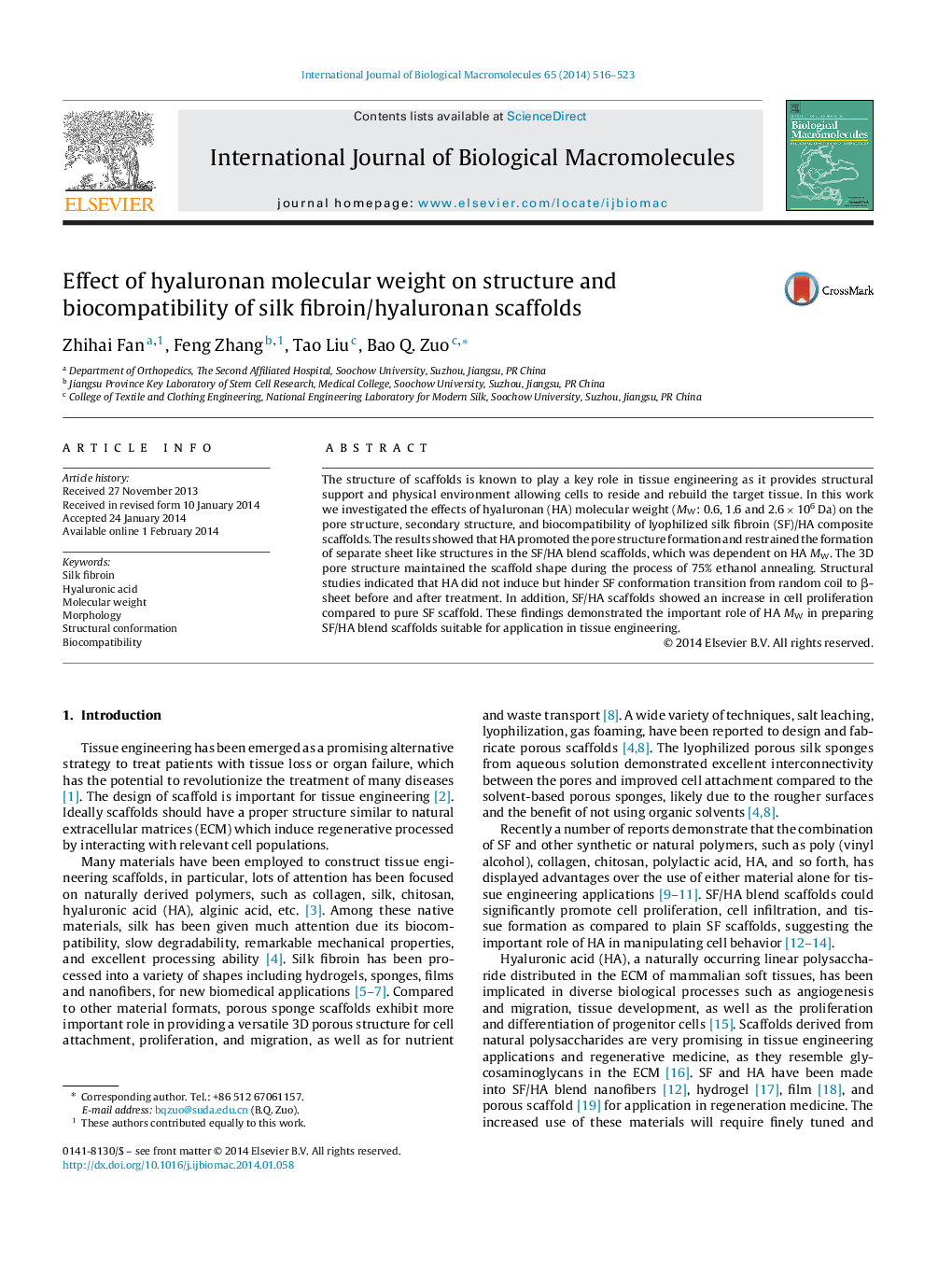| Article ID | Journal | Published Year | Pages | File Type |
|---|---|---|---|---|
| 1986578 | International Journal of Biological Macromolecules | 2014 | 8 Pages |
The structure of scaffolds is known to play a key role in tissue engineering as it provides structural support and physical environment allowing cells to reside and rebuild the target tissue. In this work we investigated the effects of hyaluronan (HA) molecular weight (MW: 0.6, 1.6 and 2.6 × 106 Da) on the pore structure, secondary structure, and biocompatibility of lyophilized silk fibroin (SF)/HA composite scaffolds. The results showed that HA promoted the pore structure formation and restrained the formation of separate sheet like structures in the SF/HA blend scaffolds, which was dependent on HA MW. The 3D pore structure maintained the scaffold shape during the process of 75% ethanol annealing. Structural studies indicated that HA did not induce but hinder SF conformation transition from random coil to β-sheet before and after treatment. In addition, SF/HA scaffolds showed an increase in cell proliferation compared to pure SF scaffold. These findings demonstrated the important role of HA MW in preparing SF/HA blend scaffolds suitable for application in tissue engineering.
